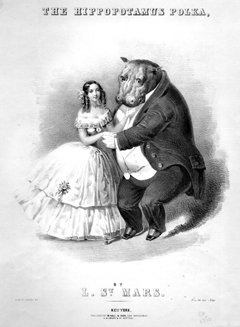The University Record, January 17, 2000 By Joanne Nesbit
News and Information Services

“In the 19th century, as now, popular culture picked up on whatever issue was in the news, and in 1851 the issue of bloomers for women was a hot one,” says Peggy Daub, head of the Special Collections Library. “Our collection of sheet music includes two musical numbers in favor of bloomers and one against them.”
The University’s Thomas A. Edison Collection of American Sheet Music, 100,000 pieces that represent what was happening in 19th-century U.S. society, is being cataloged by Library staff in preparation for microfilming. The cataloging process is concentrating on sorting and indexing the earliest 15,000 pieces in the collection, devoted to music of the pre-Civil War period.
Although there are other libraries around the country that boast outstanding collections of American music, Daub says none are as strong as Michigan’s in 19th-century holdings.
The U-M collection encompasses American sheet music from the late 1790s to about 1924, including sheet music for well-known songs like “Auld Lang Syne” and “Coming Through the Rye.”
Originally assembled by Thomas Alva Edison around 1896 to support his gramophone company, the collection was packed and shipped in 1921 to Henry Ford for inclusion with the Edison Laboratory in Greenfield Village. Ford’s wife gave it to a niece, and for years the collection was stored in the Grand Trunk Railroad depot in Swartz Creek.
In 1964, Bly Corning, a Flint area manufacturer and collector of sheet music, bought the collection, which at the time weighed 17 tons. In 1989 the School of Music purchased the bulk of the collection thanks to an anonymous donor. The collection filled a semi-tractor trailer to a height of five feet when it was delivered in Ann Arbor.
Consistently ranked among the top five academic music research libraries in the country, the University’s music library maintains an extensive collection of books, scores, periodicals, microfilm, manuscripts and recordings. It is renowned especially for its holdings of American music; early editions of works by the sons of J.S. Bach; works by women composers, largely of the 18th and 19th centuries; as well as Japanese music.

